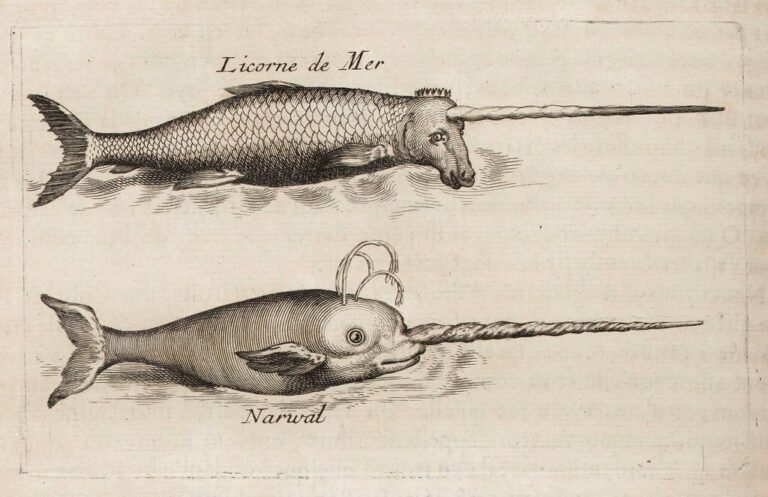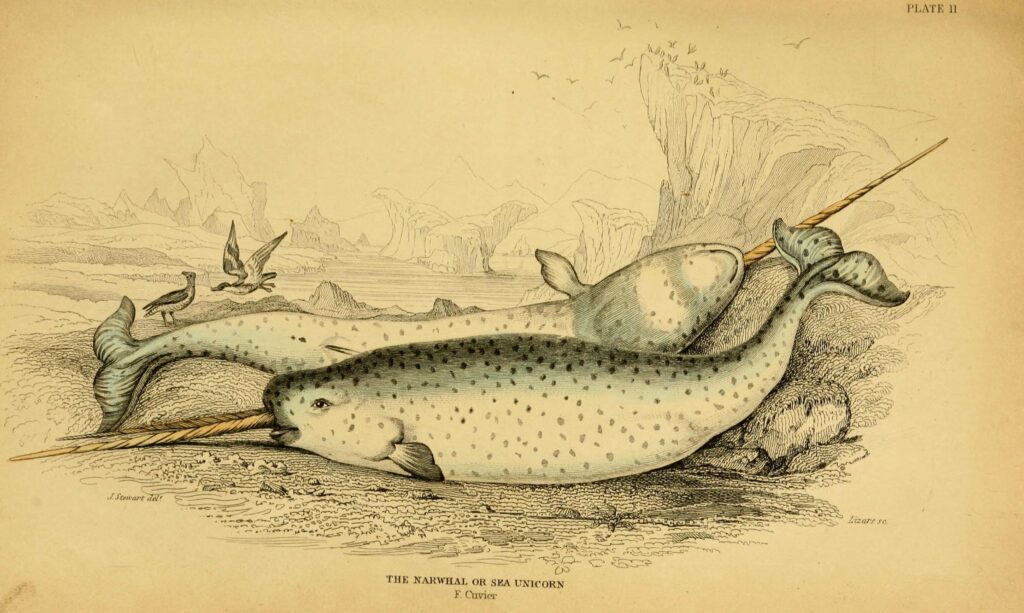Alicorn was said to be an effective cure for a wide range of ailments and was particularly associated with detecting poison, a major concern for the rich and powerful! A poisoned liquid was meant to bubble if it came into contact with Alicorn so cups made of the miracle material were much desired. Elizabeth I was meant to have offered a huge reward to anyone who could find her a Unicorn’s horn after hearing Mary Queen of Scots had such a vessel.
Most buyers, however, would not have known that the Alicorn they coveted came from Narwhals, they would have been picturing the more traditional horse with a horn and dealers made no effort to correct them. Eventually in the 1600s a sceptical Danish scholar called Ole Worm was able to prove that the vast majority of Alicorn was actually coming from the Narwhal by collecting and examining their skeletons.



